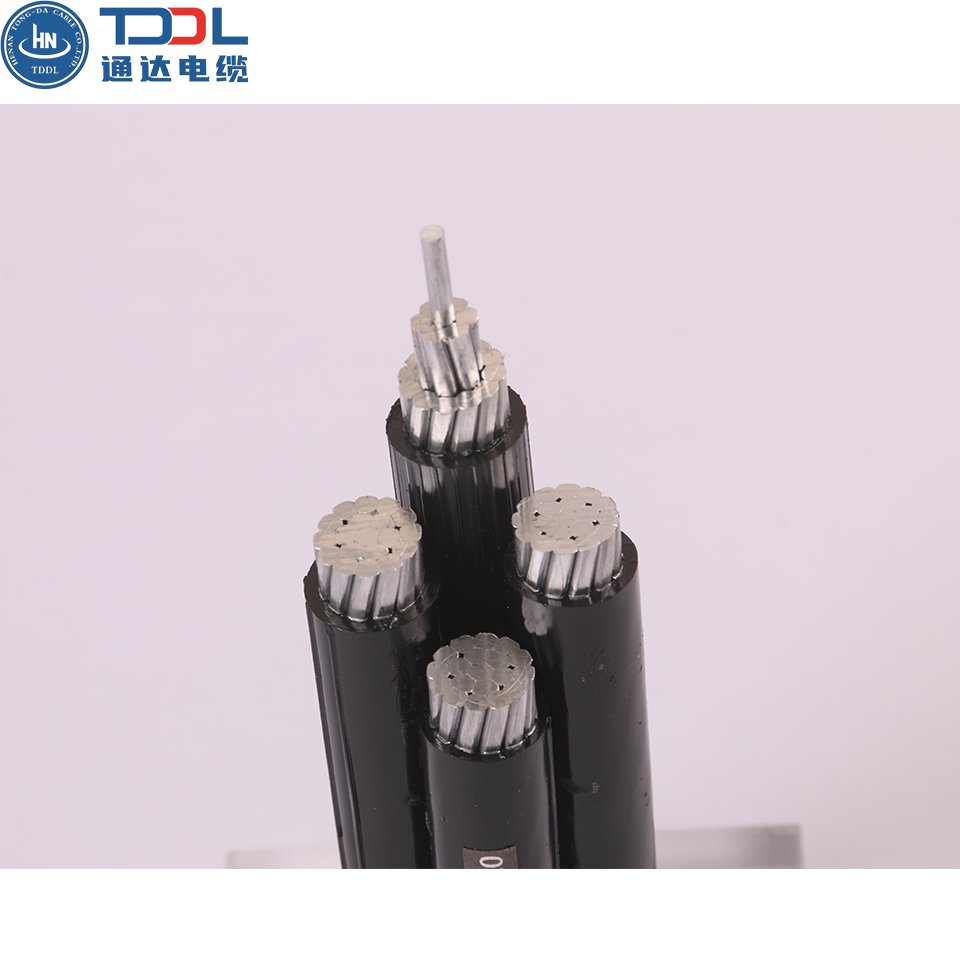Aug 22, 2025
Overhead Insulated Cables vs. Buried Power Lines: What You Need to Know
Installation and Setup
How Overhead Insulated Cables Work
Overhead cables are great for power lines up to 46kV. You hang them on poles with insulators or spacers. Setting them up is pretty simple compared to underground lines. These cables carry electricity in typical overhead setups. They’re made of a conductor with insulation, like polyethylene (PE) or cross-linked polyethylene (XLPE), which holds up against weather and sunlight.
What Buried Power Lines Need
Buried power lines require a lot of work. You have to dig trenches, lay conduits, fill them back in, and fix the surface.Unlike overhead cables that stretch far without touching much ground, buried systems need to deal with soil types, drainage, and other utilities. Buried cables are mainly suitable for places with a large number of people, such as cities and factories.
Access for Setup and Fixes
Overhead cables are easy to reach during setup or repairs. Workers can use bucket trucks to fix problems without digging. When laying and repairing buried cables, it is necessary to dig cable trenches for construction.
Safety Concerns
Weather Risks for Overhead Cables
Overhead cables deal with wind, rain, ice, and sunlight. Their insulation, usually black or grey thermoplastic polyethylene (PE) or cross-linked polyethylene (XLPE), fights off weather and UV rays. Buried cables are less affected by environmental factors.
Accidental Damage Risks
Overhead lines might get hit by tree branches or construction gear. Choosing insulation materials and spacers that are resistant to marking can help reduce the risk. Buried cables are less likely to be accidentally touched, but if the markings are not clear, damage to the cables may still occur during construction.
Fire and Public Safety
Overhead insulated cables have UV-resistant insulation and are located away from buildings and crowded areas, making them less susceptible to fire. Buried cables have a lower probability of fire, but they can pose safety risks when overloaded or aged.
Reliability and Performance
Weather Problems for Overhead Cables
Storms can disrupt overhead cables by toppling trees or breaking poles. Even with tough insulation like weather-resistant XLPE, extreme weather can cause trouble.
Why Buried Cables Handle Storms Better
Buried cables don’t get bothered by wind or ice. This makes them perfect for places with hurricanes or heavy snow, where keeping power on is super important.
How Temperature Affects Cables
Both types of cables expand with heat. Overhead cables cool off better because they’re in the open air. These cables made with thermoplastic or cross-linked polyethylene, are rated for 75°C or 90°C normal use. Buried cables need adjustments based on how well the soil handles heat, which changes depending on the location.
Maintenance and Repairs
Fixing Overhead Cables
Problems in overhead cables, like burn marks or broken wires, are easy to spot. Workers can fix them quickly using aerial platforms. This means faster power restoration during outages.
Trouble with Buried Cables
Locating faults inburied cables is tough. You need special tools like Time-Domain Reflectometers (TDRs). Even after finding the problem, you have to dig, which can mess up roads or yards. This makes repairs more complicated than overhead cables
Long-Term Upkeep Costs
Buried cables does not require too much maintenance since they’re protected. But fixing them is pricey when something goes wrong. Overhead cables need more frequent checks because they’re out in the weather.
Lifespan and Wear
Wear on Overhead Cables
Overhead cables use black weather-resistant PVC, PE, or XLPE insulation, which holds up against sunlight but wear out over many years. Regular checks can identify wear before it causes failures.
How Buried Cables Stay Protected
Buried cables don’t rust as easily, but soil acidity or water can damage metal parts if the cables aren’t well sealed. A good seals make them last longer but cost more upfront.
Appearance and Environmental Impact
How Overhead Cables Look
Overhead cables can be an eyesore in pretty rural areas or busy cities. They might clash with nice buildings or natural scenery.
Land Use for Buried Cables
Buried cables keep things looking clean. But you can’t plant trees or build big projects over their routes. This limits what you can do with the land.
Cost Differences
Upfront Costs for Overhead vs. Buried
Overhead cables are cheaper to set up. They need poles instead of trenches, and materials cost less per kilometer. Buried systems often cost a lot more at the start, depending on the ground.
Costs Over Time
Buried cables cost more upfront but save money on storm repairs. Overhead cables need ongoing checks to make sure the insulation and insulators are working properly. This adds some engineering work even after they’re set up.

FAQ
Q: What's better for wide-open rural spots?
A: Overhead insulated cables are generally the preferred solution in rural settings. They're simpler and more affordable to put up over miles. Digging deep trenches for buried cables gets pricey fast out there. It also causes significant land disruption. Additionally, residents in rural area usually care less about how cables look. Poles often blend right into those open views. But – if your area gets hammered by storms a lot, buried cables may be the more prudent choice. They tend to hold up better.
Q: Are overhead cables suitable for use near tall trees?
A: You can use them, but install carefully. Big trees cause trouble. Falling branches or thick growth near lines are risky. You'll need regular tree trimming to keep things clear. That means ongoing costs. Using insulated cables helps it cuts down on outages from stray branches brushing the lines. Still, it's a constant watch. In really thick woods? Buried cables might save your headaches if trimming's a constant battle.


.jpg)
